Act I
Don Magnifico's palace.
Introduction: "No, no, no, no: non v'è": Baron Don Magnifico lives here with his daughters Clorinda and Tisbe and his stepdaughter Angelina, known as Cenerentola (Cinderella). The stepfather has cheated her out of her entire fortune, and keeps her in the house as a scullery maid.
Alidoro, the tutor and confidant of the local Prince, Don Ramiro, is looking for a suitable bride of equal rank and station for his protégé. Disguised as a beggar, he discovers how generous Cenerentola is, and how heartless her two sisters are. Some noblemen arrive to tell them that the prince is entertaining thoughts of marriage, and they invite all the young ladies in the land to his castle.
Recitative and cavatina: "Miei rampolli feminini" The two sisters are madly excited over the invitation to the castle, as is their father. Don Magnifico is enchanted with the thought of seeing a secret dream come true and having one of his daughters marry the prince.
Scene and duet: "Un soave non so che in quegl' occhi scintillò" Don Ramiro, disguised as a servant falls in love with Cenerentola.
Chorus and cavatina: "Come un' ape ne' giorni d'aprile" The servant Dandini, disguised as the prince, appears, escorted by the noblemen, and while Don Magnifico looks on, he courts the Baron's two daughters.
Recitative and quintet: "Signor, una parola": Cenerentola begs Don Magnifico to allow her to go to the prince's ball, but he refuses. Don Magnifico tells Alidoro, who would like to meet all three daughters, that Cenerentola is just a lowly scullion, and his third daughter has died.
Recitative and aria: "Vasto teatro è il mondo": Alidoro comforts Cenerentola and promises to escort her to the ball.
Prince Don Ramiro's palace.
Recitative: "Ma bravo! Ma bravo!": Dandini, still disguised as the prince, appoints Don Magnifico chief wine steward.
Chorus and aria: "Intendente, reggitor" Don Magnifico performs the duties of his new office.
Duet and finale: "Zitto, zitto, piano, piano": Dandini reports to Ramiro how stupid the two sisters are. Unexpectedly Cenerentola appears, grandly attired. Everybody is struck by this beauty's remarkable similarity to Cenerentola. Banquet.
Act II
Prince Don Ramiro's palace.
Recitative and aria: "Sia qualunque delle figlie": Don Magnifico and his two daughters discuss their prospects: they are firmly convinced they will win the game.
Recitative and aria: "Si, ritrovarla io giuro": Cenerentola gives Don Ramiro a bracelet, and before disappearing she tells him look for her. Another bracelet, which she always wears, will enable him to recognize her.
Recitative and duet: "Un segreto d'importanza": Don Magnifico tries to get Dandini to tell him whether he has chosen Clorinda or Tisbe. Dandini, in response, reveals his true identity.
Don Magnifico's palace.
Song: "Una volta c'era un re": Cenerentola has returned to her usual place.
Recitative and thunderstorm: Don Magnifico and his two daughters return home in a fury.
Recitative and sextet: "Siete voi": Don Ramiro appears, this time clad in his princely raiment and escorted by Dandini. He recognizes the bracelet on Cenerentola's wrist. He wishes to make her his wife. Don Magnifico and his two daughters are beside themselves with anger.
Chorus, scene and rondo finale: "Nacqui all'affano, al pianto": The courtiers pay homage to their new princess, Cenerentola. Clorinda and Tisbe beg her forgiveness, which she generously grants. With everyone deeply moved, the curtain falls.
English translation by Donald Arthur
© Bavarian State Opera
In this variation of the fairy tale, the wicked stepmother is replaced by a stepfather, Don Magnifico. The Fairy Godmother is replaced by Alidoro, a philosopher and tutor to the Prince. Cinderella is identified not by a glass slipper but by her bracelet. The supernatural elements that traditionally characterize the Cinderella story were removed from the libretto, simply for ease of staging.
Time: Late 18th century – early 19th century
Place: Salerno (Italy)
Act 1
Angelina, known to her stepfather and stepsisters as "Cenerentola", is forced to serve as the maid in her own home. She sings of a king who married a common girl ("Una volta c’era un rè"). A beggar arrives; her stepsisters, Clorinda and Tisbe, want to send him away, but Cenerentola gives him bread and coffee. Courtiers follow, announcing that Prince Ramiro will come to visit while he searches for the most beautiful girl in the land to wed. Cenerentola's stepfather, Don Magnifico, hopes to use this as an opportunity to save his own failing fortune.
When the room is empty, Ramiro enters alone, disguised as a valet. The "beggar" - in fact, his tutor, Alidoro - has informed him of a goodhearted young woman spotted here. Ramiro intends to find her incognito. Cenerentola returns, and she and Ramiro are attracted to each other (duet: "Un soave non-so che"), but when he asks who she is, she's overwhelmed and flees.
Finally, the "prince" arrives – the real valet, Dandini, who has taken his master's place - and Magnifico, Clorinda, and Tisbe fall over themselves to flatter him. He invites the family to a ball that evening, where he plans to find his bride; Cenerentola asks to join them, but Magnifico refuses (quintet: "Signor, una parola"). This callousness isn't lost on Ramiro. Alidoro, still in his rags, returns to inquire after a third daughter in the house; Magnifico claims she has died. Left alone with Cenerentola, Alidoro promises to take her to the ball himself, and that God will reward her kindness ("Là del ciel nell’arcano profondo").
The prince and his valet have retired to Ramiro's country house in some confusion, as neither of Magnifico's daughters resembled the worthy bride Alidoro had described. When Clorinda and Tisbe arrive, Dandini gives them a little test: he offers his "valet" to whichever sister the "prince" does not marry. The ladies are outraged at the idea of marrying a servant. Alidoro then arrives with a beautiful, unknown lady who strangely resembles Cenerentola. Unable to make sense of the situation, they all sit down to supper, feeling as if they are in a dream.
Act 2
Magnifico frets over the competition his daughters now face from the strange lady ("Sia qualunque delle figlie"), but Cenerentola isn't interested in the "prince," saying she's fallen in love with his servant. An overjoyed Ramiro steps forward; however, Cenerentola tells him that she's going home and doesn't want him to follow her. If he really cares for her, she says, he will find her, giving him one of a matching pair of bracelets. The prince determines to do exactly that ("Sì, ritrovarla io giuro").
Meanwhile, Magnifico confronts the disguised Dandini, insisting that he choose one of his daughters to marry. Dandini tries to stall, but is forced to admit that he's actually the valet and not the prince at all (duet: "Un segreto d’importanza").
A furious Magnifico and his daughters return home, where they order Cenerentola, back in rags, to serve them. A storm is thundering outside. Alidoro sabotages Ramiro's carriage so that it breaks down in front of Magnifico's manor, forcing the prince to take refuge within. Cenerentola and Ramiro recognize each other's bracelets; the others comment on the situation (sextet: "Siete voi?"). When Ramiro threatens Cenerentola's recalcitrant family, she asks him to forgive them.
Ramiro and Cenerentola are married, and celebrate their wedding at the palace. Magnifico tries to win the favor of the new princess, but she asks only to be acknowledged, at last, as his daughter. She reflects on the misfortune to which she was born and the sudden reversal of her fate, then forgives her family for all her past unhappiness, adding that her days of sitting sadly by the fire are over ("Nacqui all'affanno... Non più mesta"). Everyone present acknowledges that she truly is worthy of the throne.


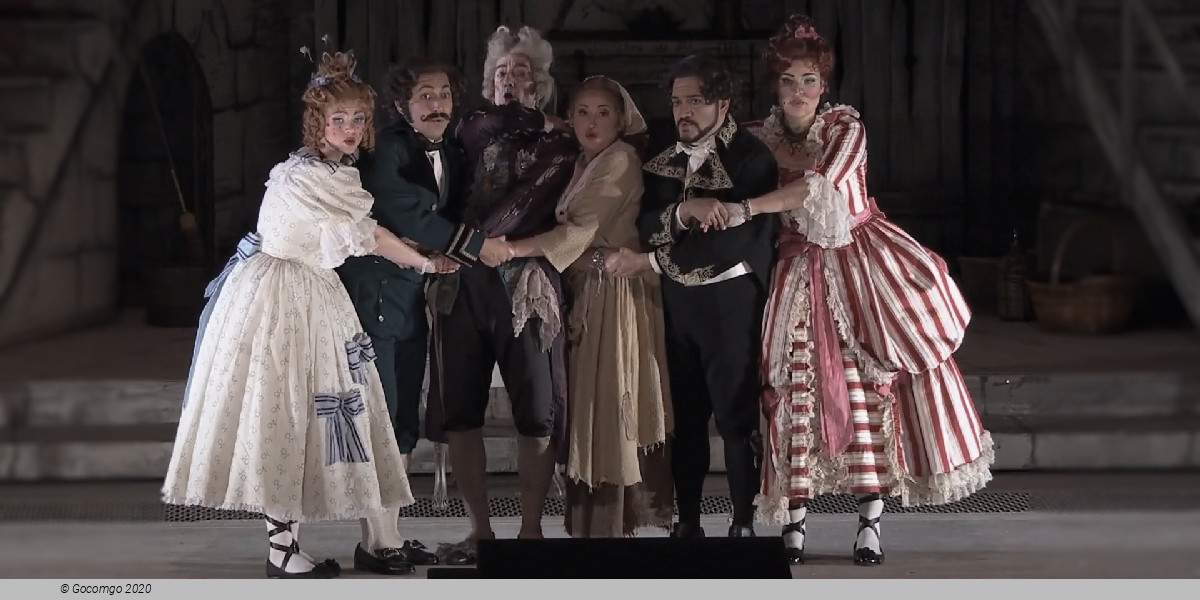
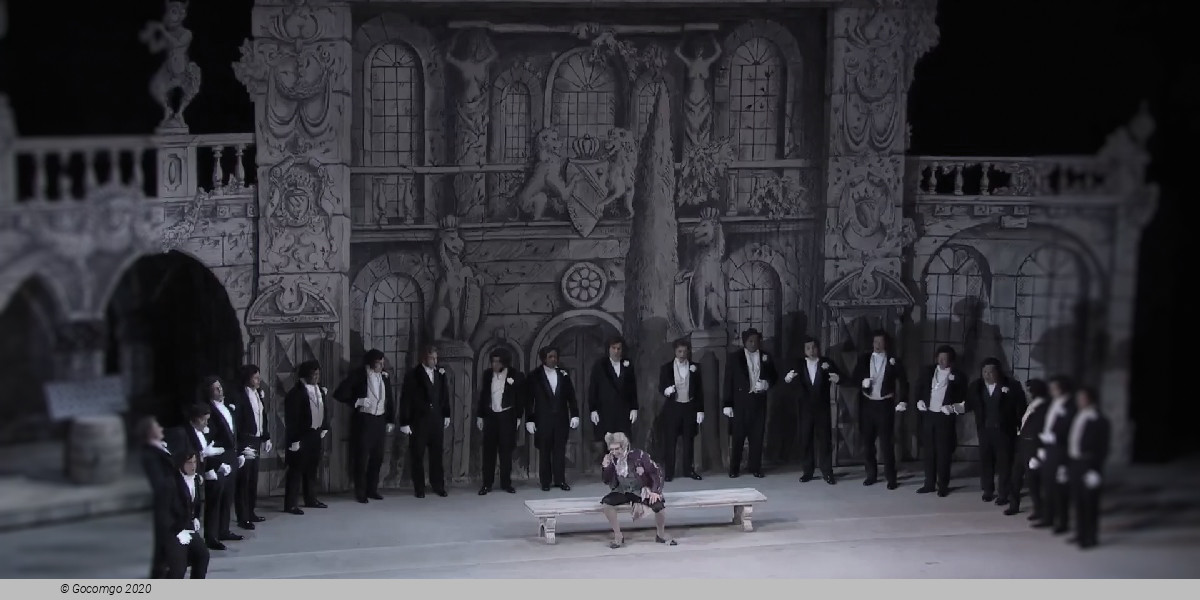
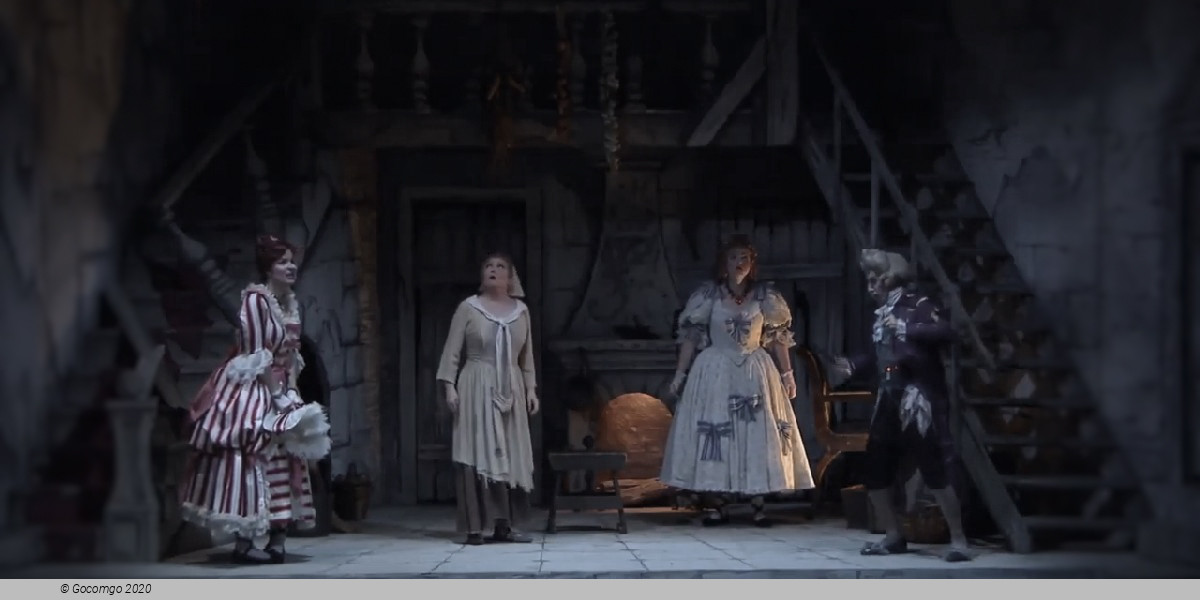
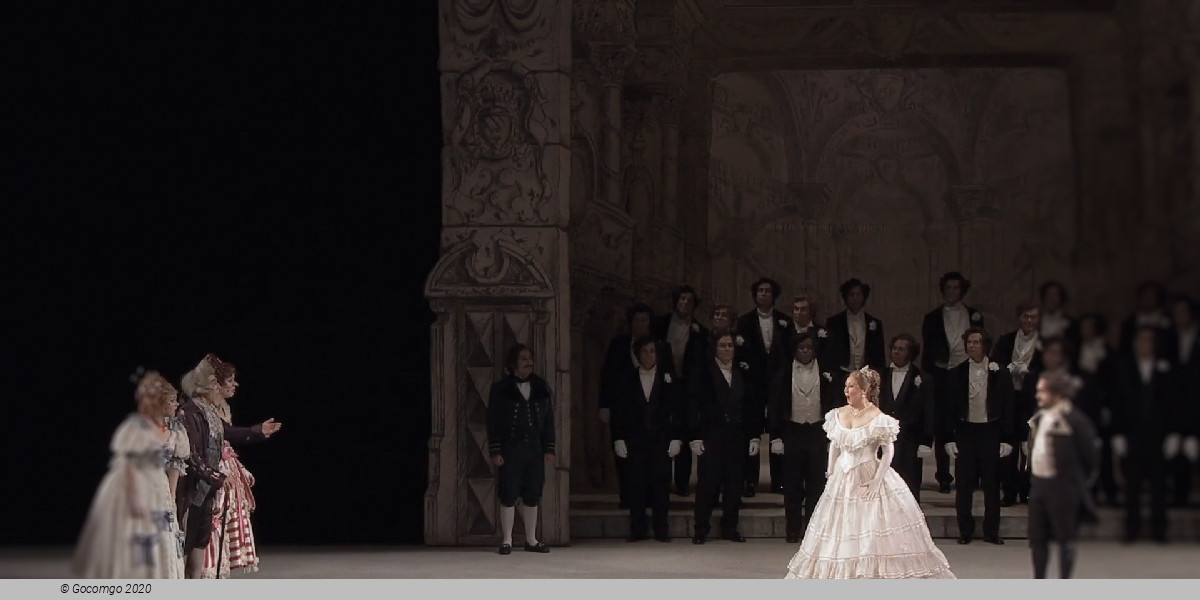
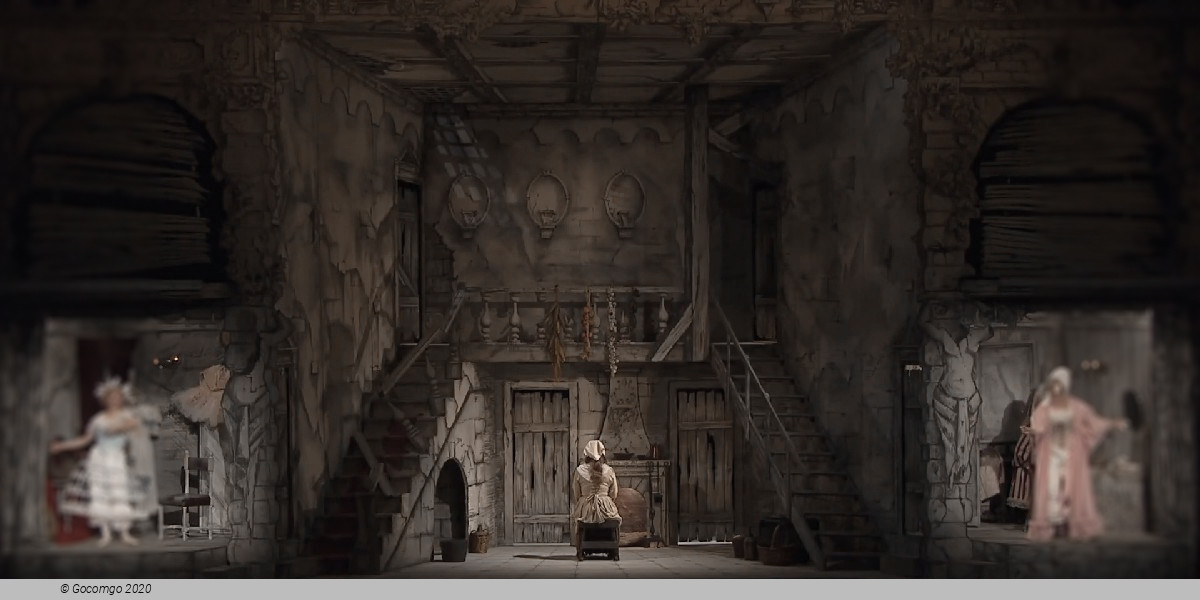
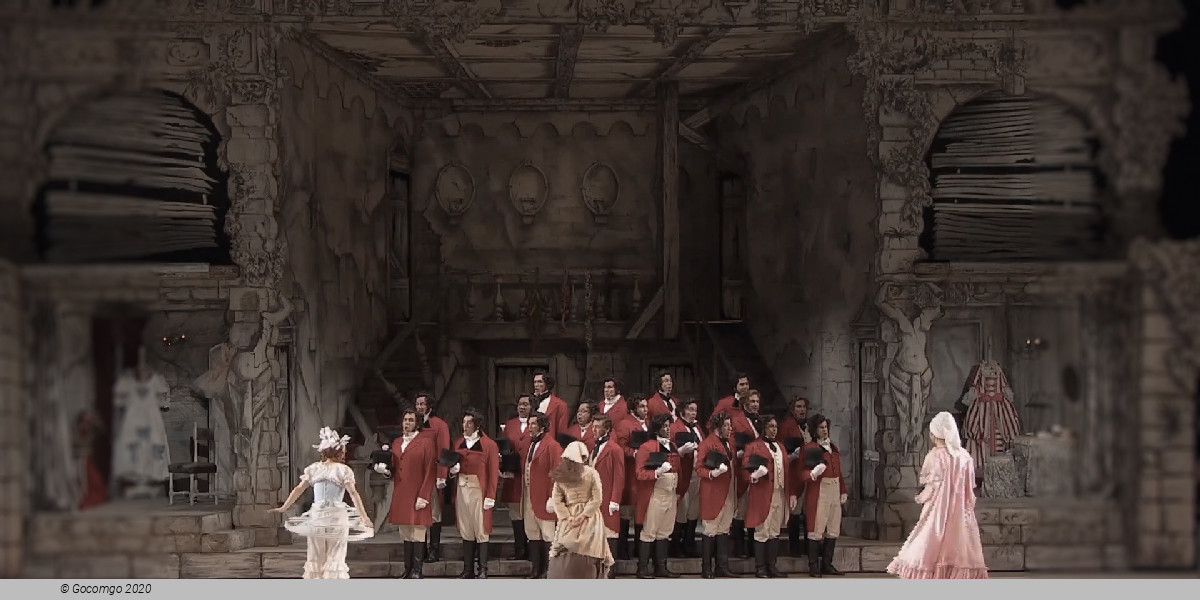
 Max-Joseph-Platz 2
Max-Joseph-Platz 2